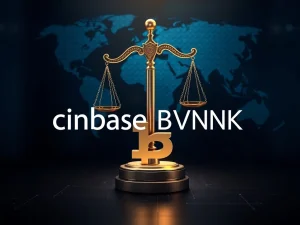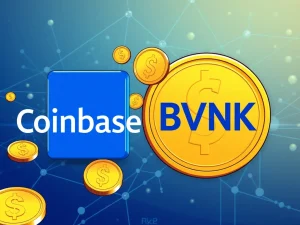Crypto Adoption: Unlocking True Financial Sovereignty in Emerging Markets

The global embrace of cryptocurrencies is undeniable, with crypto adoption surging in regions like Southeast Asia and Latin America. Yet, despite this rapid growth, the ambitious promise of financial sovereignty for millions remains tantalizingly unfulfilled. We stand at a critical juncture where digital wealth exists, but its practical utility in daily life is severely limited. This paradoxical disconnect highlights a fundamental infrastructural gap, particularly acute in emerging markets where traditional financial systems often fall short.
Unlocking Financial Sovereignty: What’s Still Missing?
The vision of financial sovereignty through blockchain technology is compelling: individuals controlling their own wealth, free from inflationary pressures and restrictive banking systems. While many in emerging economies have adopted digital assets to escape local currency devaluation, they often find themselves in a one-directional financial flow. They can acquire digital wealth, but spending it or converting it back into local currency for everyday needs becomes a significant hurdle. This asymmetry is stark: billions in Bitcoin ETFs in developed markets enjoy instant liquidity, yet stablecoin holders in regions that need it most struggle with basic off-ramps. The revolution, it seems, is still under construction.
- The Paradox: Digital wealth without practical utility.
- The Challenge: Limited off-ramps and spending avenues.
- The Need: Seamless integration into daily economic life.
Stablecoins: A Vital Lifeline for Emerging Markets
Stablecoins have emerged as a crucial financial tool, particularly for individuals in emerging markets. They offer a lifeline, providing a stable, dollarized alternative for savings in economies plagued by high inflation and currency devaluation. For the first time, users in these countries can participate in robust global capital markets, including access to US treasury bills through tokenized funds like BlackRock’s BUIDL. This isn’t just a marginal improvement; for non-dollarized users, USD stablecoins are transformative, offering a safe yielding product and a shield against economic instability. However, the benefits are curtailed if these savings cannot be easily accessed or spent when needed.
| Stablecoin Benefit | Current Limitation |
|---|---|
| Dollarized Savings | Difficulty in off-ramping to local currency |
| Access to Global Capital | Limited avenues for spending or daily use |
| Inflation Hedge | Inability to seamlessly integrate into daily life |
The Critical Role of Seamless Crypto Payments
For the crypto revolution to truly deliver on its promise, robust crypto payments infrastructure is paramount. While stablecoins offer stability, the journey to access and spend these assets remains fragmented. Users navigate a complex maze of banks, payment rails, and peer-to-peer networks. Major players like Meta, Visa, and Stripe have explored blockchain for cross-border payments, yet many of these efforts are centralized adaptations, constrained by legacy architecture. They offer incremental improvements rather than a fundamental reimagination of financial systems, often perpetuating exclusionary access in emerging markets.
Furthermore, regulatory hurdles pose a significant challenge. Many services in Latin America and Southeast Asia that facilitated local currency to stablecoin exchanges faced banking resistance, leading to constant operational disruptions. Last-mile off-ramping is especially problematic in regions like Africa or South Asia, where basic infrastructure like stable internet, smartphone access, or simple banking services are scarce. These are precisely the users who stand to benefit most from accessible digital finance.
Redefining Finance: Empowering Emerging Markets
The unique landscape of emerging markets presents an ideal environment for blockchain’s practical utility beyond speculative trading. Just as these regions leapfrogged traditional technologies like landlines and credit cards to embrace mobile messaging and digital payments, they are poised to lead the global adoption of crypto-native banking. The shift of financial activities from traditional systems to on-chain solutions will naturally accelerate where existing systems are weakest. Crypto neobanks, integrated with modular Layer-2 networks, represent a crucial architectural blueprint for solving these structural challenges.
These next-generation financial platforms need to offer a “full-loop” system: not just easy on-ramping (converting local currency to crypto) but also seamless off-ramping and real-world spending capabilities. Most current solutions provide only half the journey, creating a “Hotel California” effect where assets enter the digital realm but struggle to return to the real economy. The ultimate goal is to capture salary direct deposits into unified fiat and crypto accounts, eliminating the perpetual friction between traditional and digital finance. This banking-first model, built on user habits, is key to equitable, decentralized financial access for all.
A Call to Action: Completing the Crypto Revolution
The crypto revolution is indeed half-built, but the blueprint for its completion is becoming clearer. By prioritizing seamless crypto payments, robust off-ramps, and integrated “full-loop” financial systems, we can truly unlock the promise of financial sovereignty for millions, especially in emerging markets. This requires a holistic approach, blending DeFi innovation with user-friendly interfaces, akin to how intuitive operating systems transformed computing. The imperative is clear: design finance that genuinely works for the world’s majority, turning the tantalizing promise of digital wealth into practical, everyday utility. The future of global finance hinges on building these evolutionary bridges, ensuring that the next wave of crypto adoption delivers on its profound potential for inclusion and empowerment.







